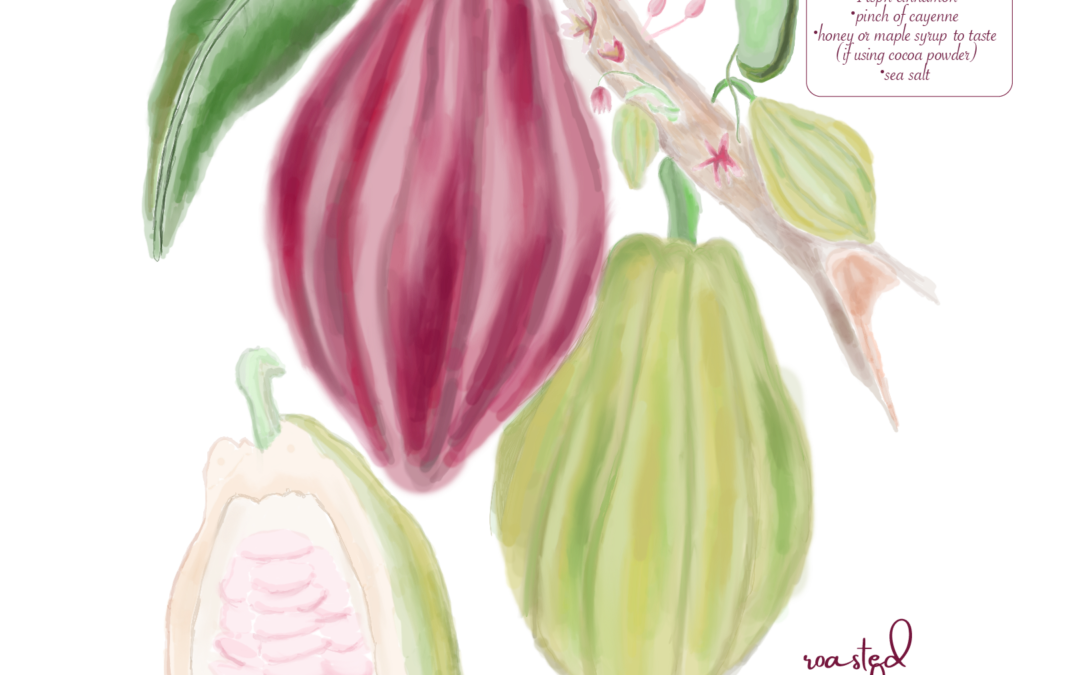The Divine Plant World
By Lyndsey Redmann
We can trace the history of chocolate back to the Olmec, Aztec, and Mayan civilizations of southern Mexico. The creation of the universally loved candy bar, originating with the beans of a cacao tree (known as Theobrama Cacao), is a beautiful and fascinating cultural discovery, one that connects us to ancient traditions and the botanical world.
The Theobroma Cacao tree produces large, multi-colored fruit pods, filled with as many as 40 cacao beans in each. Cacao beans are husked and roasted, then referred to as “cocoa” vs. “cacao.” Long before marshmallow-topped hot cocoa became a winter tradition, there was once a very different style of chocolatey drink.
Xocoati is a special drink the Olmecs first prepared as long ago as 1500 BC. For most of its history, chocolate was served only slightly sweet, quite bitter, and a bit spicy. Cinnamon and honey sweetened the drink while cornmeal thickened it.
These civilizations greatly valued cacao and incorporated xocoati into many special occasions. The word “cacao” comes from the Mayan word “ka’kau” meaning “heart blood,” while the word “chocolate” is from “chockda’j,” meaning “drink together.” The gatherings were a means to facilitate introspect and healing, as a community. The deep connection between cacao and the indigenous people mirrored itself in the love and bond they shared with one another and within themselves.
Cacao represents a rebalance, to slow down and tune in. We savor the sweetness along with the bitter—the whole journey. While we may not prepare our hot chocolate this way anymore, that’s not to say we don’t share the same love and comfort. Whether you’re sipping a cup of hot chocolate or savoring a square of 85 percent dark chocolate, you are creating your own little ceremony. We can pause, create some space, and connect to the quiet and stillness of winter. Like an old best friend, your peace of chocolate.

